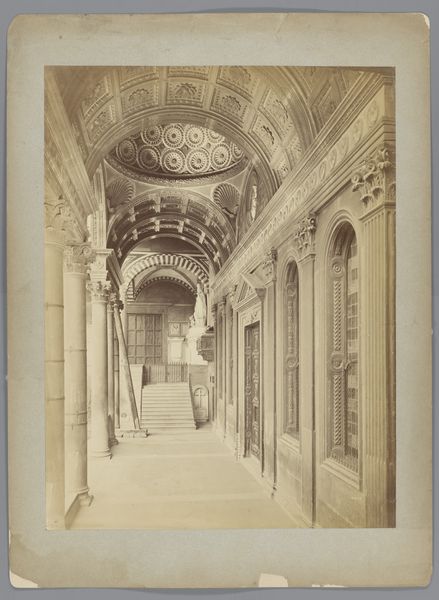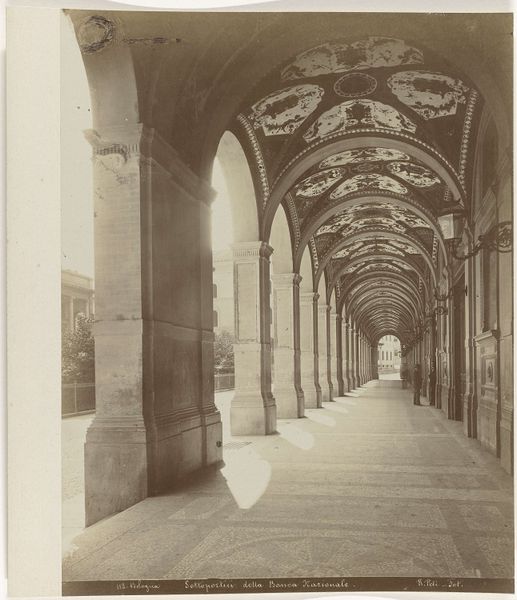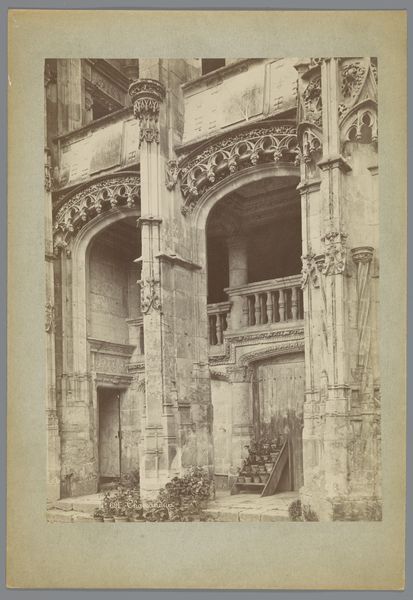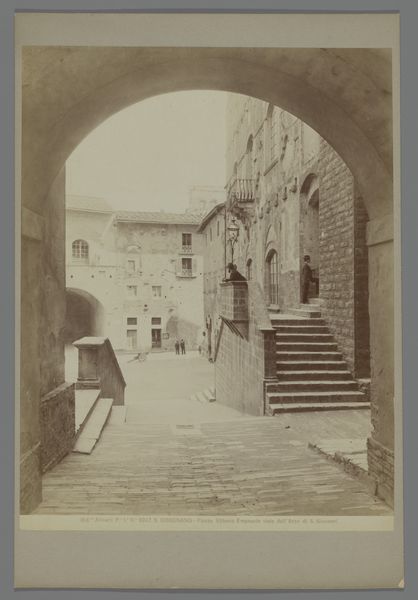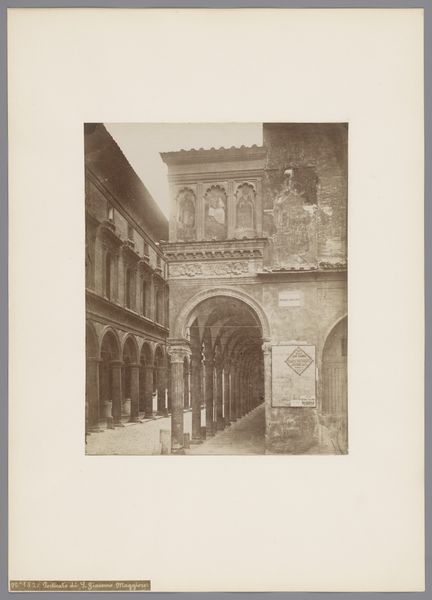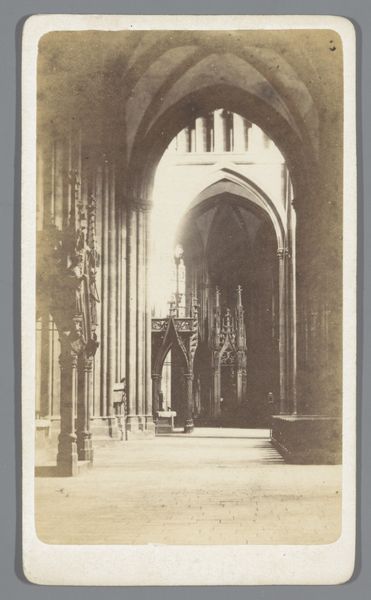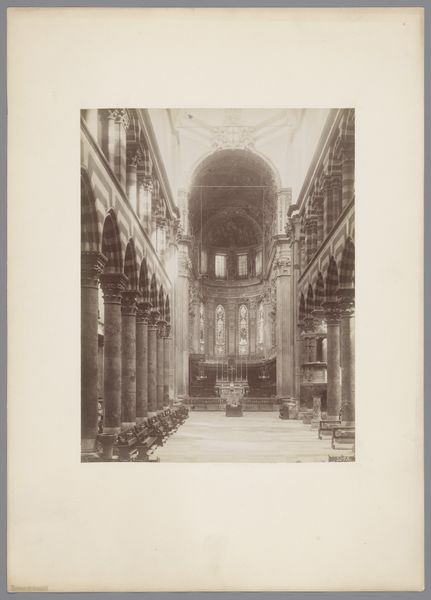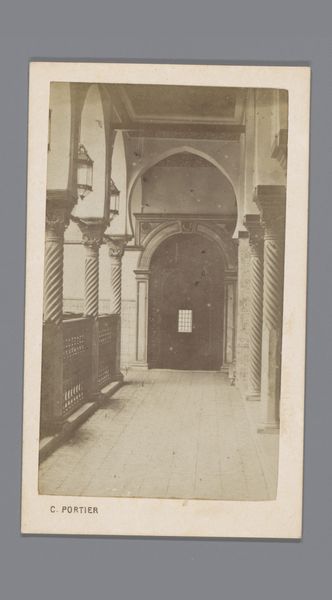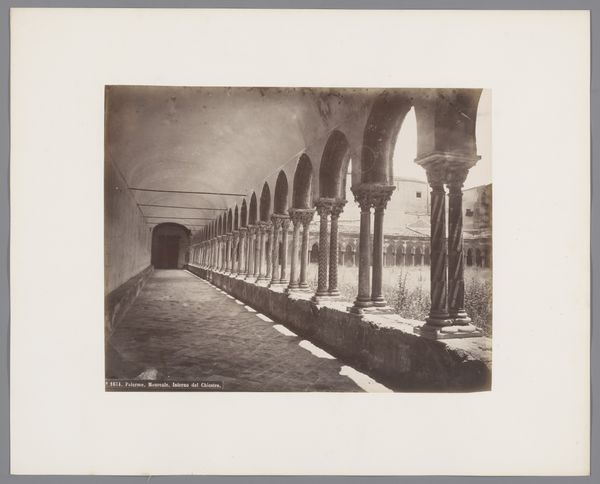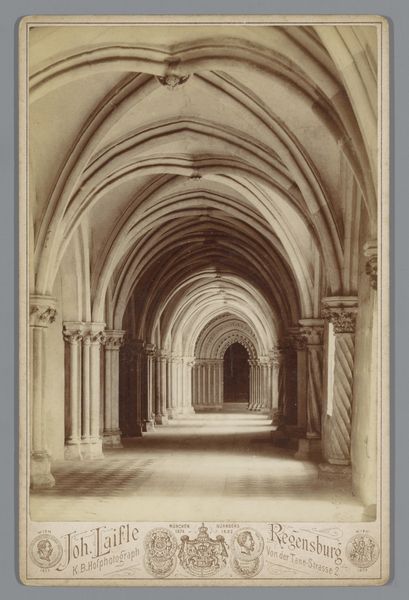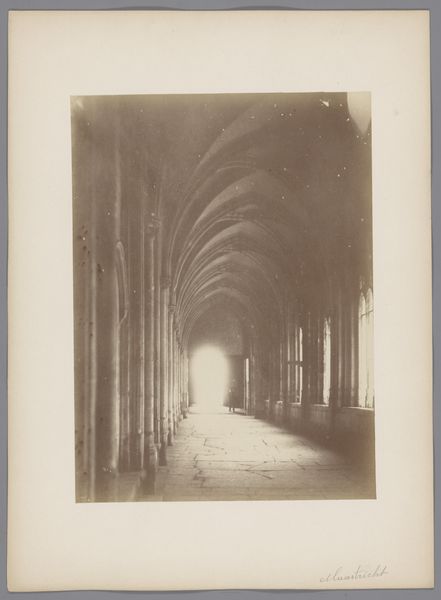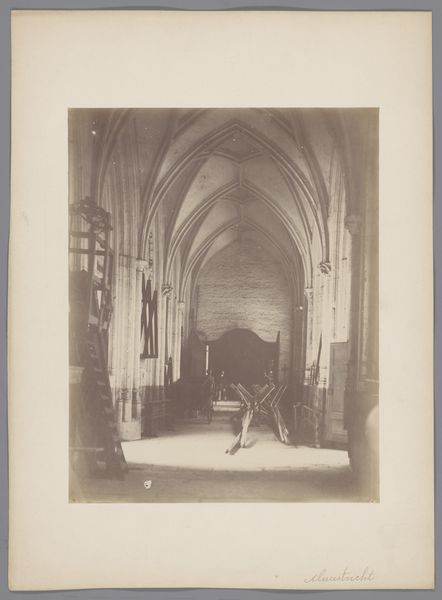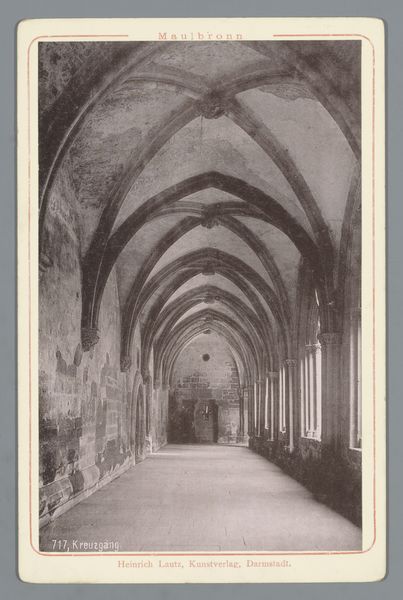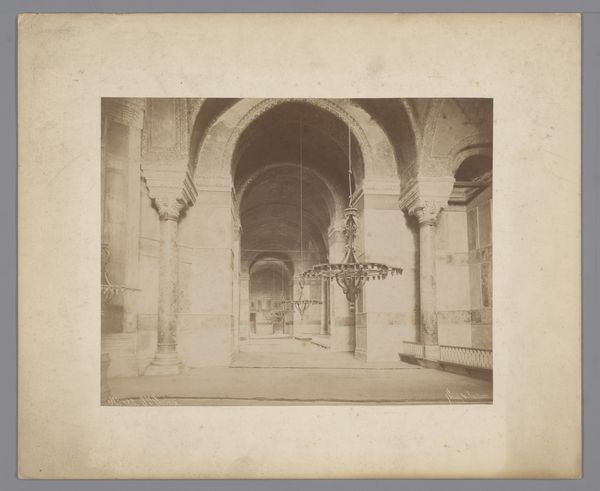
photography, site-specific, albumen-print, architecture
#
photography
#
site-specific
#
albumen-print
#
architecture
#
building
Dimensions: height 353 mm, width 250 mm
Copyright: Rijks Museum: Open Domain
Curator: Looking at this albumen print by Médéric Mieusement, circa 1875-1900, what immediately strikes me is the sheer scale suggested by the colonnade stretching into the distance. Editor: Yes, a certain coldness, perhaps even a loneliness. The architecture presses in on either side, a bit forbidding despite the light. I can't help thinking of the social forces behind these grand estates—who built it, who profited, who was excluded. Curator: Exactly. Mieusement was photographing the "Zuilengalerij van Château Larochefoucauld," a gallery featuring those imposing columns and complex ceiling. The albumen print process, layering egg white on paper to bind light-sensitive chemicals, results in that beautiful tonal range, almost like a drawing. Consider the labor intensive process behind each print! Editor: It's a compelling tension: the aesthetic allure masking the potential exploitation that funded such luxury. That symmetry and ornate carving were symbols of power, a display of resources extracted, probably through deeply unequal labor practices of the time. Curator: And what a deliberate choice it must have been to document this architecture so faithfully with the cumbersome photographic technology of the era! He’s cataloging material culture and celebrating its ingenuity while creating art through this new industrial medium. Editor: To further discuss material processes is important. But don't you think, by so carefully framing this architectural space devoid of people, he almost renders invisible the very hands that crafted the intricate ceiling? It's a fascinating, uneasy absence. How many workers died extracting the materials or erecting this monument? And does the technology flatten them even more? Curator: I understand the uneasiness, truly. I see more a celebration of the labor put into this glorious artwork rather than erasure. But you are absolutely right about the context, what makes the images powerful is knowing the stories. It would be naive not to see the complexities of labor, consumption, and display. Editor: I agree it has a strong message either way! It highlights so many discussions even today about inequities and historical perspectives. I appreciate you making that suggestion for context, Curator! Curator: Absolutely. I love discovering how a photographic piece that is rooted in a specific place and time manages to start these sorts of relevant present day discussions.
Comments
No comments
Be the first to comment and join the conversation on the ultimate creative platform.
